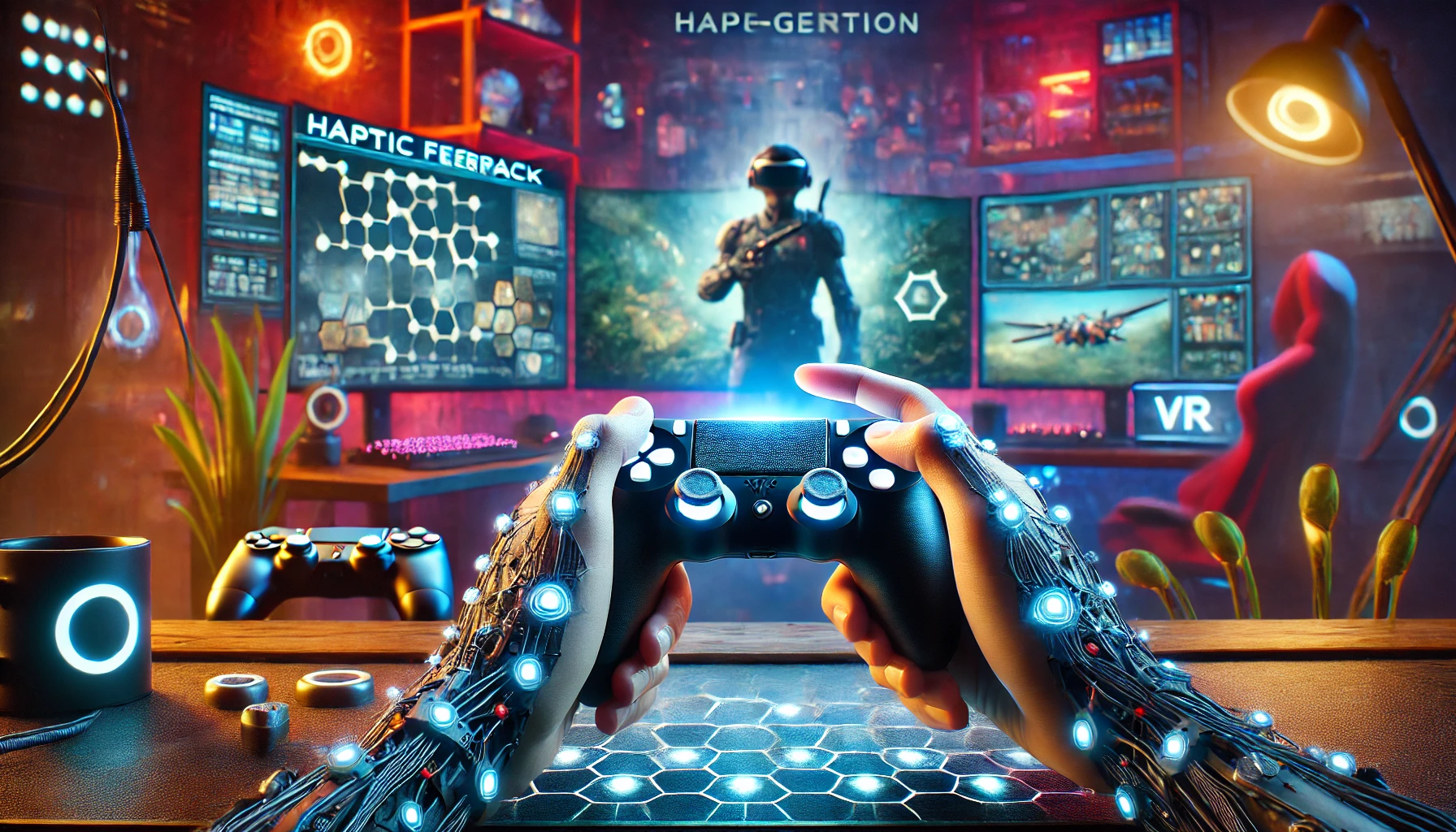Gaming has always been about immersion—drawing players into fantastical worlds where they can live out adventures beyond imagination. While stunning visuals and rich audio have played significant roles, the sense of touch has often been the missing piece. Enter haptic feedback, a technology that’s transforming gaming by introducing tactile sensations, making virtual experiences feel remarkably real.
The Evolution of Haptic Feedback in Gaming
Haptic feedback isn’t entirely new to gaming. In 1997, Nintendo’s Rumble Pak for the N64 introduced basic vibrations, allowing players to feel in-game actions like explosions or collisions. This concept was further developed with Sony’s DualShock controllers, which became a staple in gaming setups.
However, recent advancements have taken haptics to unprecedented levels. The PlayStation 5’s DualSense controller, for instance, features adaptive triggers and refined haptic motors that can simulate various textures and resistances, such as the tension of drawing a bowstring or the grittiness of trudging through sand. Similarly, the Nintendo Switch’s Joy-Con controllers utilize HD Rumble to convey subtle sensations, enhancing gameplay immersion.
For those seeking new sensations, exploring innovative games like Pin-Up Aviator can offer unique experiences that push the boundaries of traditional gameplay.
The Science Behind the Sensations
At its core, haptic feedback involves using vibrations and forces to simulate touch sensations. In gaming controllers, this is typically achieved through small motors with unbalanced weights that spin to create vibrations. More advanced systems employ voice coil actuators or piezoelectric elements to produce precise and varied feedback, allowing developers to craft specific tactile experiences that align with on-screen events.
For example, in racing games, haptic feedback can simulate the feel of different terrains—smooth asphalt versus rough gravel—by altering vibration patterns. In action games, it can replicate the recoil of firearms or the impact of punches, providing a more immersive experience.
Expanding Horizons: Beyond Controllers
The quest for deeper immersion has led to innovations extending haptic feedback beyond traditional controllers:
- Haptic Suits and Gloves: Devices like the SenseGlove Nova provide force feedback to the hands, allowing users to feel virtual objects’ size, stiffness, and resistance, enhancing realism in VR environments.
- Haptic Chairs and Cushions: Razer’s Freyja gaming cushion attaches to chairs, delivering vibrations that correspond with in-game actions, enveloping players in the experience.
- Haptic Headsets: The Razer Kraken V4 Pro headphones incorporate haptic feedback, enabling players to feel audio cues, such as the rumble of a nearby explosion, adding a tactile dimension to sound.
These innovations aim to engage multiple senses, creating a more holistic gaming experience.
The Impact on Gameplay and Player Engagement
Integrating haptic feedback has profound effects on gameplay and player engagement:
- Enhanced Immersion: By providing tactile responses to in-game events, players feel more connected to the virtual world, leading to increased engagement.
- Improved Feedback: Haptics offer immediate physical responses to actions, aiding in understanding game mechanics and improving reaction times.
- Emotional Connection: Tactile sensations can evoke emotional responses, such as the thrill of a speeding car or the tension of a stealth mission, deepening the player’s connection to the game.
Studies have shown that players using haptic feedback devices report higher levels of satisfaction and immersion compared to those without.
Challenges and Future Prospects
Despite its benefits, haptic technology faces challenges:
- Cost and Accessibility: Advanced haptic devices can be expensive, limiting widespread adoption among casual gamers.
- Standardization: With various platforms and devices, creating a unified haptic experience across games is complex.
- Development Complexity: Designing meaningful haptic feedback requires additional resources and expertise, which can be a barrier for some developers.
Looking ahead, the future of haptic feedback in gaming is promising. Researchers are exploring skin-integrated haptics and AI-driven feedback systems to create more nuanced and personalized tactile experiences. As technology advances and becomes more affordable, we can anticipate haptic feedback becoming a standard feature in gaming, further blurring the lines between virtual and reality.
In conclusion, haptic feedback is revolutionizing gaming by introducing the sense of touch into virtual experiences. From the subtle vibrations of a controller to the full-body sensations of haptic suits, this technology is enhancing immersion, engagement, and realism in gaming. As we continue to push the boundaries of what’s possible, the future of gaming feels more exciting than ever.



